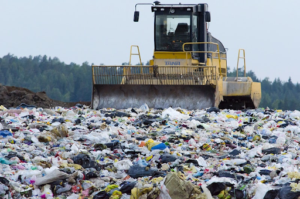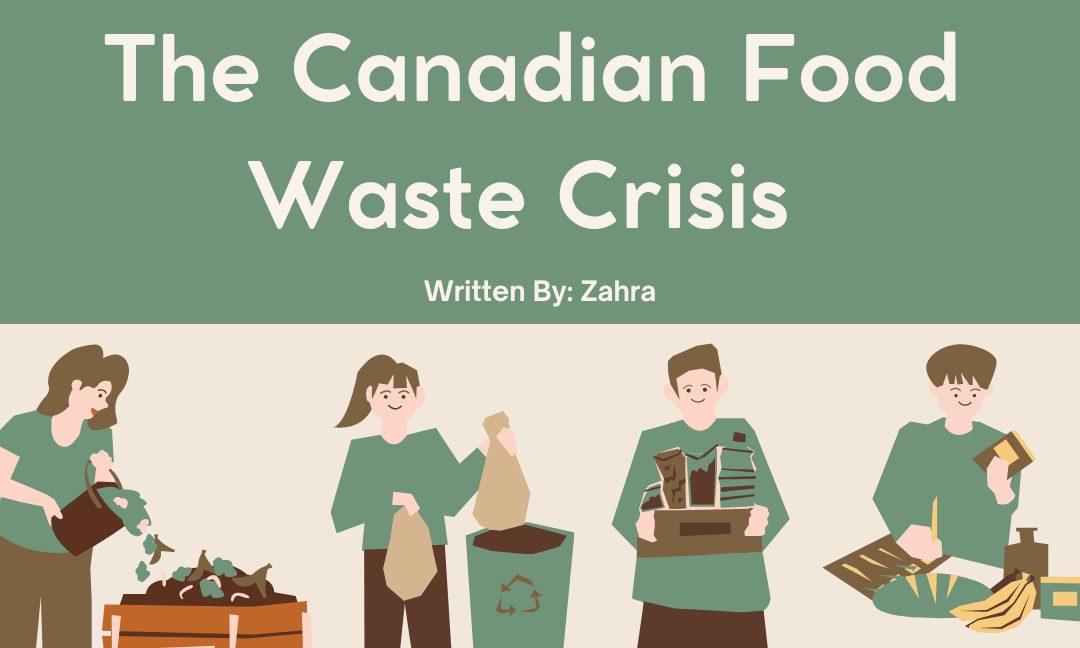Written By: Zahra
Edited By: Kiritika Rana
Designed By: Eshika Hiremath
Published By: Tvisha Lakhani
The Crisis
In the heart of a nation known for its abundance and rich agricultural landscapes, Canada grapples with a significant challenge – food waste. Every year, millions of tonnes of food are discarded, contributing not only to economic losses but also to environmental and social consequences. From farm to table, various factors influence the staggering amount of wasted food, reflecting a complex interplay of consumer behaviour, industry practices, and systemic inefficiencies.
A 2019 report by Second Harvest estimated that Canada wastes 58% of food production, equivalent to 35.5 million tonnes. The report by this Toronto-based agency, which redistributes surplus food to those in need, highlighted that almost 5 million tonnes of food, valued at $21 billion, is lost during manufacturing and processing. Second Harvest CEO Lori stated that we as Canadians need to change our value of food immediately, pointing out that “the abundance of food we produce has led us to dismiss its intrinsic value.”

The numbers have only increased in the years since. The value of overall food waste in Canada is estimated at a staggering $49 billion, sufficient to feed every Canadian for five months.
In 2022, the National Zero Waste Council reported that 63% of the food Canadians throw away could have been eaten. For Canada as a whole, the amount of edible food wasted per year amounts to 2.3 million tonnes, costing Canadians over $20 billion! Studies show that the most common food items wasted are fruits and vegetables. The report outlines what is wasted every day in Canada, putting these horrifying statistics into perspective:
- 1,300,000 tomatoes
- 2,600,000potatoes
- 650,000 loaves of bread
- 1,3000,000 apples
- 130,000 heads of lettuce
- 640,000 bananas
- 1,000,000 cups of milk
- 470,000 eggs
Causes
The value of overall food waste in Canada is estimated at a staggering $49 billion, sufficient to feed every Canadian for five months. But what causes such a grotesque phenomenon to occur on a national level? Reports by various agencies, including Second Harvest and the National Zero Waste Council, outline several root causes behind avoidable food loss and waste. At the consumer level, overbuying, misinterpretation of expiration dates, and a preference for visually appealing products lead to high annual household food waste. Retail practices, driven by strict cosmetic standards and anticipation of demand, result in the rejection of imperfect items and overstocking. Supply chain inefficiencies, poor handling practices, and excess production, and lack of food and waste handling infrastructure contribute to significant losses of edible food. Studies suggest that better planning and awareness could prevent 60% of food waste in Canada. A significant portion of food is discarded unnecessarily before or after “best-before dates” due to the misconception that it becomes unsafe to consume, when in reality, these dates often indicate prime freshness rather than safety. The value of overall food waste in Canada is estimated at a staggering $49 billion, sufficient to feed every Canadian for five months.
Environmental Impact
Food waste creates a deadly cycle that threatens the environment with every passing day. Each year, 56.million tonnes of carbon dioxide equivalent emissions are created by food waste in Canada. Food in landfills creates methane gas, a deadly greenhouse gas that is 25 times more damaging to the environment than carbon dioxide. According to Love Food Hate Waste, annual avoidable food waste in Canada has an impact equal to 2.1 million cars and 9.8 million tonnes of carbon dioxide in the atmosphere. In addition to greenhouse gases, the production and disposal of wasted food squander valuable resources such as water, energy and agricultural inputs.
What Can We Do?
For the everyday Canadian, there are numerous ways to help reduce food waste in the country. In order to reduce Canada’s food waste, changes must be made in different aspects of daily life:
Mindful Shopping
- Planning meals and creating shopping lists to avoid overbuying
- Buy products in bulk judiciously, considering product shelf life

Storage Practices
- Properly store perishable items to extend their freshness
- Be aware of “best before” dates as guidelines, not strict rules
Meal Planning and Preparation
- Cook in batches and freeze portions for later use
- Get creative with leftovers to reduce disposal
Plant Your Own
- Grow a garden in your backyard or a communal space
- Reduce your carbon footprint by eliminating transportation, reliance on fossil fuels for manufacturing, and resources for packaging
Donate Surplus Food
- Contribute to local food banks or charities
- Collaborate with community initiatives addressing food insecurity
Composting
- Establish home composting systems for food scraps
- Support community composting initiatives

Educational Initiatives
- Raise awareness about the environmental impact of food waste
- Engage in educational programs that promote responsible consumption
Support Sustainability
- Choose products with eco-friendly packaging
- Support businesses committed to reducing food waste in their operations
Community Engagement
- Participate in or initiate local events focusing on reducing food waste
- Share tips and success stories within communities to inspire collective action
If everyone does their part, a change can be made at a countrywide level.

